Most people underestimate the power of bees. Yes, those tiny, buzzing insects are one of nature's most precious gifts. There are many awesome bee facts that aren't widely known. They are the backbone to our food chain.
Unfortunately, the bee population is struggling. The decline in the bee population over the last decade has been dramatic. Many farmers are importing bees to help keep their crops alive. Fortunately, there are many ways that we can help bees.
It's easy to learn how to help the humble honey bee, one of nature's most undervalued and essential critters. Let's take a look at how bees help our planet and how we can help them thrive.
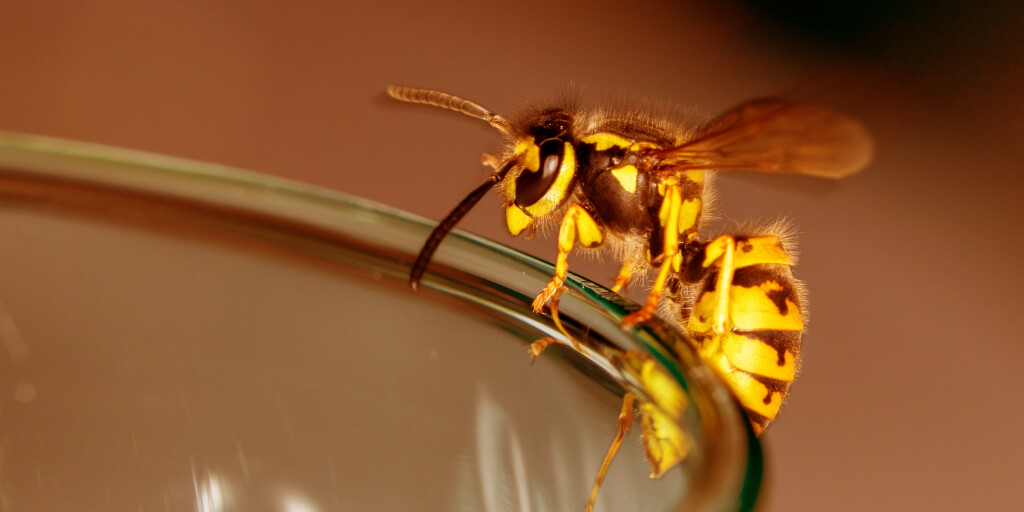
How Do Bees Help the Planet?
We take bees for granted. These tiny, winged insects are one of the most essential parts of the food chain. Without bees, the fruits and vegetables that we consume would all but disappear.
But how exactly do bees help the planet?
Bees are master pollinators. As they collect nectar for the hive, they gather pollen on their small furry legs. They continue to jump between flowers throughout their journey.
This cross-pollination helps plants grow and produce food. For many different plants, this pollination process essential to its survival. In fact, over 90% of the world's crops are pollinated by bees.
While bees aren't the only insects that can aid cross-pollination, they are the most effective. Unlike flies and wasps, bees have tiny little hairs on their legs. They also visit many more flowers than other species do. Without bees, the pollination process would come to a grinding halt.
Eventually, many of the crops that the world relies upon for food would cease to flourish. Losing the honey bee could lead to food scarcity. This is not something that would only affect developing countries; large, developed countries like the United States and the United Kingdom are heavily dependent on the bee.
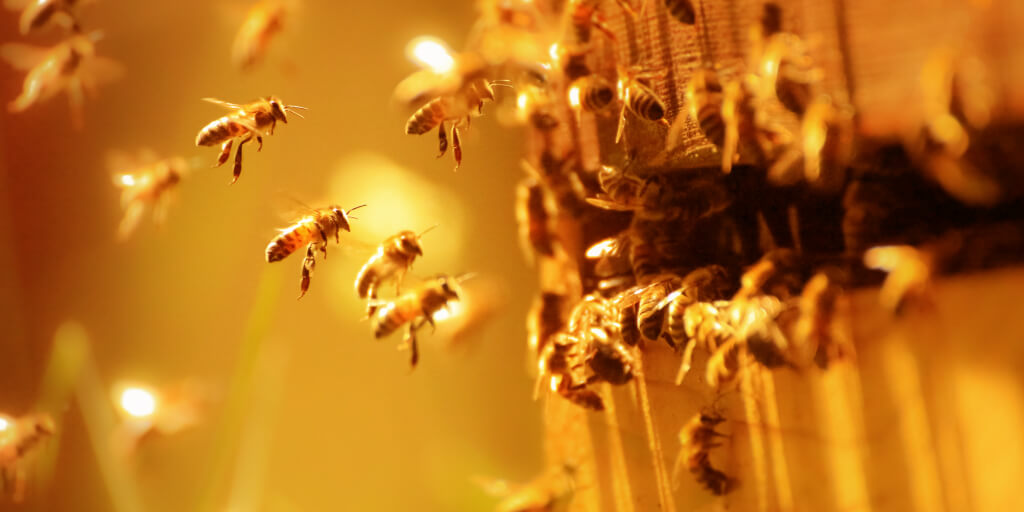
Awesome Bee Facts You May Not Know
Bees are fascinating little creatures.
There are three different types of bees: the worker bee, the drone bee, and the queen bee.
The queen bee is the only one out of a colony that can lay eggs. Without the queen bee, the bee colony would collapse. On average, a healthy queen bee can lay 1,500 eggs per day.
Worker bees are also unique. The worker bee populations in colonies are entirely made up of female bees. The female worker bees are responsible for many jobs. Not only are they tasked with gathering nectar and pollen, but they are also responsible for feeding and cleaning the queen bee and her eggs. They also build and repair the honeycombs within the hive.
The male drone bees are solely responsible for mating with queen bees. They fly from colony to colony in search of queen bees to mate with.
While many people are afraid of them, one of the more important bee facts is that bees aren't out to harm people. Unlike wasps, if a worker bee uses its stinger in defense, it will die.
The hive is a very fascinating environment. Bees don't just use honeycomb to store honey. The honeycomb is also used to store food and water. It also serves as tiny little nurseries for the baby bees.
The honey that is harvested from these honeycombs is a precious resource. Did you know that bees are the only insect on the entire planet that makes food that humans eat?
In the peak summer months, the population of beehives swells. The average beehive can grow to 50,000 to 80,000 in the bee population. In a single beehive, this giant population can produce more than 100 pounds of extra honey. Beekeepers only harvest this excess. The remainder of the honey is left for the colony to use as food and nourishment.
But the time to create this honey is limited. On average, the average lifespan of a honey bee during the working season is between three and six weeks. Each bee only contributes about 1/12th of a teaspoon of honey within their short lifetime. The colony is only able to generate extra honey because of the large population of bees.
Population size isn't the only contributing factor in honey production. On average, bees must visit nearly 2 million flowers to collect enough pollen to make one pound of honey. It takes over 500 worker bees to accomplish this.
That's why it's a good thing that bees move so quickly. With two sets of wings, bees can fly almost 15 miles in one go. They travel at speeds up to 15 miles per hour by beating their wings 200 times per second. Bees also use their wings to spread pheromones to other bees. These pheromones are a form of communication. Bees use pheromones and special bee dances to let other worker bees know where to get their pollen.
Honey flavor varies by location. Each type of honey has a unique flavor profile. The flavor and taste of particular honey is determined by which types of flowers the bees visited. Honey produced with clover pollen tastes much different than honey produced with violet pollen.
In addition to honey, bees also produce royal jelly. The worker bees have a special gland in their heads that secretes the royal jelly. They use this jelly to feed and sustain the queen bee.
Now that you know just a few of the fascinating facts about bees, let's look at what bees eat to sustain their energy.
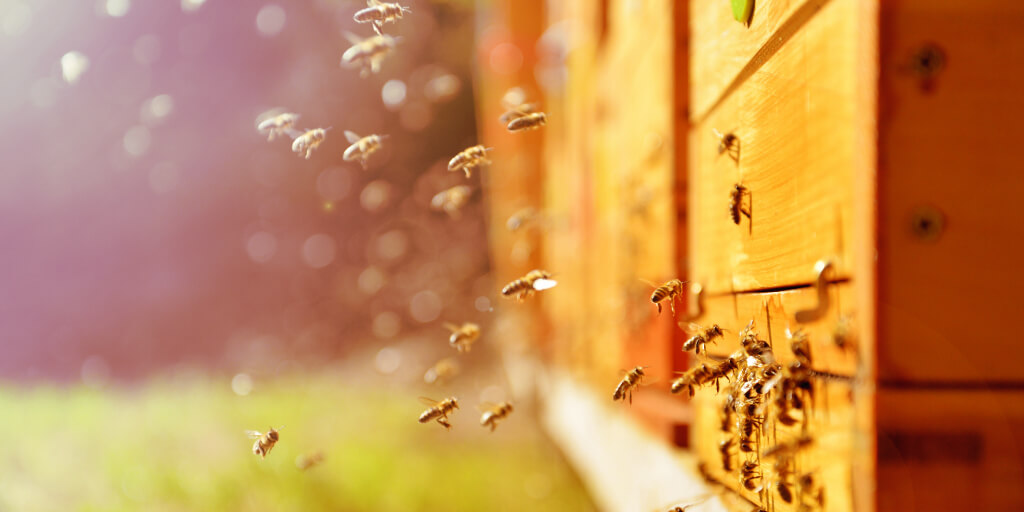
What and How do Bees Eat?
Bees are diligent workers. That's why they need good sources of food to keep maintain their energy. Unlike humans, bees rely solely upon plant products to sustain themselves.
Bees like to consume various plant products. They often eat nectar from plants. This nectar is a liquid with high amounts of sugar. The bees digest this sugary treat and turn it into energy.
Bees also consume pollen. This colorful plant powder also provides the bees with a good source of energy.
Bees love honey. Honey is really just dried out nectar. The bees use their tiny little wings to remove water from the nectar that they gather. Once it is dehydrated, the nectar is preserved for winter storage when flowers and nectar aren't readily available.
Beekeepers may also supplement their colony's diet with sugar water if there is a lack of blooms for the bees to visit. Providing sugar water for bees is a temporary solution. The sugar water lacks many of the nutrients that naturally occur in nectar and pollen.
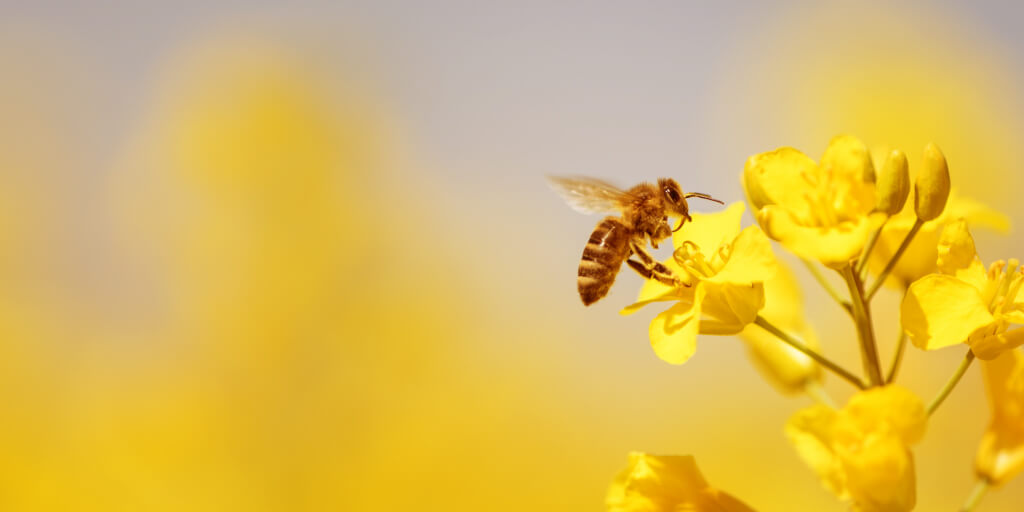
What You Can Plant to Help Bees
If you're looking to help support your local bee population, there are specific types of plants that you can incorporate into your garden.
The first step to creating a bee-friendly environment is to reconsider how much grass you maintain. Grass provides no nutritional value for bees. As grassy lawns continue to grow in popularity, they push out the flowers that bees need for survival.
When you are choosing flowers, look for native species and avoid highly hybridized plants. Plants that are bred for show produce beautiful flowers, often without seed. This means they often lack the pollen stores that bees need.
Also, try to plant single flowering plants. The single layer flowers, such as daisies and marigolds, are much easier for the bees access. They also typically produce more nectar than double-headed flowers.
It is important that you select a variety of flowers that continue to bloom throughout the growing season. Bees need food during all of the warmer months. Planting flowers that only bloom for a few weeks out of the year don't help bees maintain their food stores in preparation for winter.
Also, keep in mind that each species of bee has a flower preference. While one bee may be an excellent pollinator for an apple tree, another may be better suited for strawberry flowers. A wide variety of flowers in your garden will nourish multiple species of bees.
Finally, make sure that you avoid using harsh herbicides and pesticides in your bee garden. There are natural alternatives available. Without pesticides, other insects, such as spiders and praying mantises will flourish. These naturally occurring insects will also help keep insect populations in check without the use of dangerous pesticides.
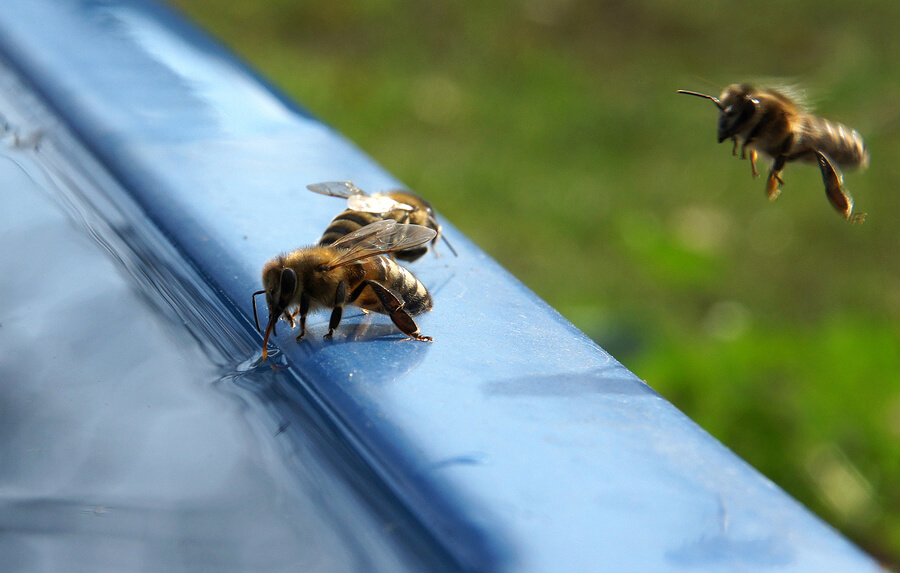
Do Bees Drink Water?
One of the lesser known bee facts is that bees need water! On the hottest of summer days, bees need more than just nectar. That's why many beekeepers set out sources of fresh water.
Bees will often drink from natural sources, like streams or creeks. However, if these sources are too far away, the bees may become dehydrated. Like humans, bees also depend on fresh water for their survival.
To help support the bee population in your garden, set out a small dish with fresh water. Put a few small stones or pebbles and twigs in this dish for bees to rest on while they drink. Keep the water fresh to ensure that the bee population in your garden thrives.
Our bee populations are struggling to survive. Humans continue to destroy their native habits and food sources. They are also struggling to adapt to climate change and the pesticides that we use on our crops. We depend on these industrious insects for every third mouthful of food. Without them, humans will struggle to survive. There's no reason to fear the common honeybee. We must all work together by replanting their native habitat and providing good sources of food and water for them.
Do you have any great bee facts to share? Let us know in the comments down below!
Sources:
https://thehoneybeeconservancy.org/plant-a-bee-garden/
https://www.ontariohoney.ca/kids-zone/bee-facts
https://friendsoftheearth.uk/bees/why-do-we-need-bees
http://awaggledance.weebly.com/buzz-the-blog/what-do-honey-bees-eat-or-drink

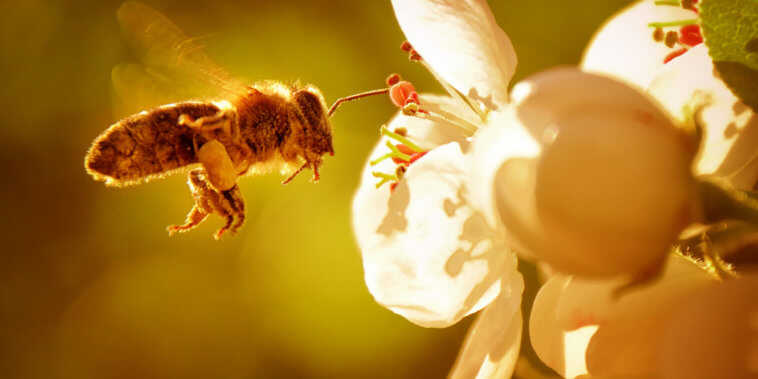


Comments
Loading…